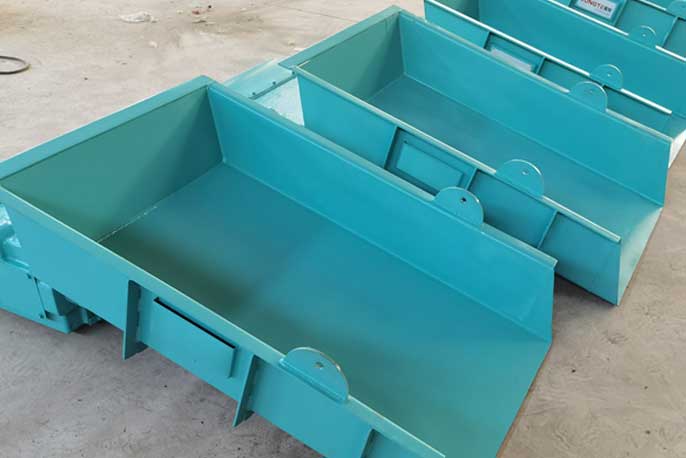Vibratory feeders are used widely in the automation industry for handling and orienting parts. These feeders can be sorted into different categories based on how they move parts, such as linear and inline vibratory feeders.
Linear Vibratory Feeders

Linear vibratory feeders operate by moving parts in a straight line with the help of electromagnetic vibrations. The basic structure of a linear vibratory feeder consists of a tray on which part rests, which is vibrated by the electromagnetic force. The tray’s angle and length can be adjusted according to the required speed, and the feed rate can be adjusted using a variable frequency controller.
Linear vibratory feeders can handle complex automation systems with complicated range of parts. They are capable of feeding parts at a precise rate, with a wide range of speeds and flow rates. Linear vibratory feeders are typically used in applications like assembly lines, sorting, and packaging.
One of the significant advantages of linear vibratory feeders is their high feed rate, which is especially useful in high-throughput assembly lines. The electromagnetically powered vibration technology provides a smoother and more efficient movement of parts, which helps prevent jams and ensures that the parts are correctly aligned and oriented. This type of feeder can also be equipped with sensors and controls to detect jams, monitor power consumption, and adjust the feed rate to ensure optimal performance.
Linear vibratory feeders are great for materials handling which require smooth movement, where jerky movements can damage the parts. They also work more efficiently with heavy and bulky parts, moving them with much less effort than with inline feeders.
Inline Vibratory Feeders
Inline vibratory feeders operate by creating a circular or spiral motion using angled surfaces and magnets. With this motion, the parts feed along the conveyor’s path and are oriented so that they can be directed along a specific route. Inline feeders are typically used to handle smaller and lighter parts, and are often used in applications such as pharmaceutical, electronics, and food processing industries.
Inline vibratory feeders are classified as high-frequency feeders. Their frequency varies between 120 and 1500 cycles per minute. With these high frequencies, inline feeders can handle small parts with high accuracy, with better control over how they are oriented and positioned.
One of the key advantages of inline vibratory feeders is their compact design, which saves space in assembly lines. The smaller size also means that they require less energy to operate, making them an ideal choice for energy-efficient automation systems.
However, inline vibratory feeders also come with some limitations. They cannot handle parts that are too heavy or bulky, as the circular motion may cause the parts to jam or get stuck. Inline feeders are also more expensive than linear feeders, due to their complex design and use of high-frequency motors.
Comparison between Linear and Inline Vibratory Feeders
- Linear and inline vibratory feeders each have their advantages and disadvantages, and selecting the right type for a particular application depends on the specific needs of that application.
- Linear vibratory feeders are ideal for handling larger and heavier parts with more stringent movement requirements. They provide a smoother and more efficient movement of parts, which helps prevent jams and ensures that the parts are correctly aligned and oriented. They are also more cost-effective than inline feeders, which makes them a popular choice in many automation systems.
- Inline vibratory feeders are ideal for handling smaller and lighter parts with more delicate movement requirements. They offer better control over part orientation, which is critical in industries such as electronics and pharmaceuticals. They also save space in assembly lines due to their compact design and may fit where linear feeders won’t. And, they work more efficiently with a minimal number of parts.
Both linear and inline vibratory feeders offer unique advantages over one another, making them ideal for different applications. However, they are not a permanent solution for every application, and other considerations should be taken into account when selecting them. Therefore, it is important to consult with a knowledgeable automation professional to assess which type of feeder is best suited for each specific application.